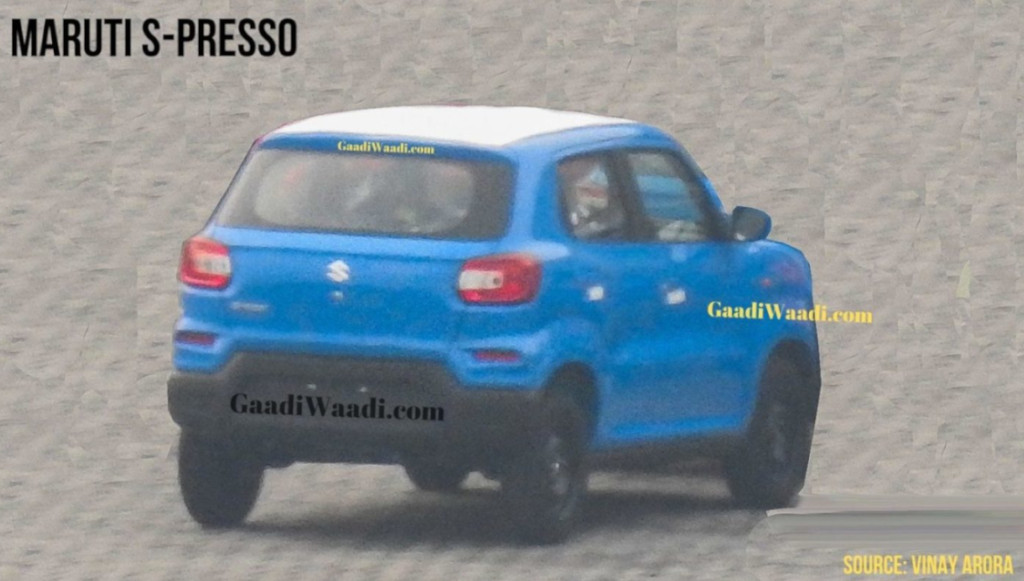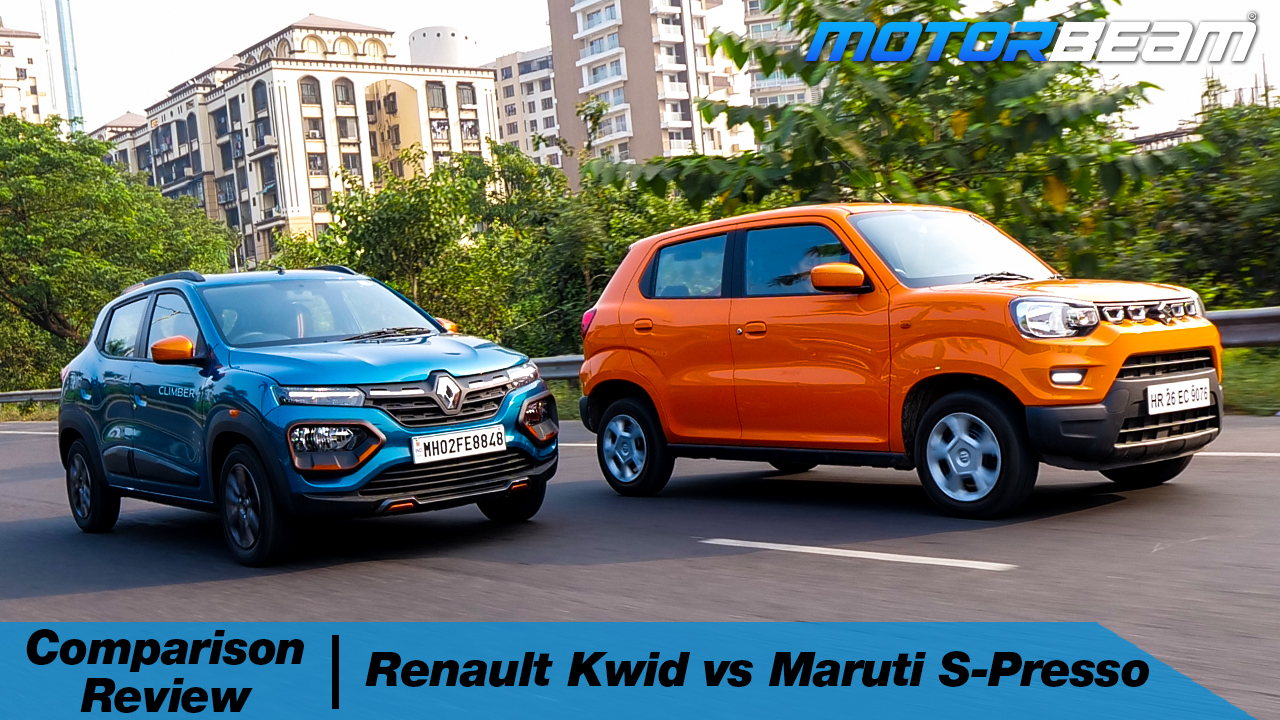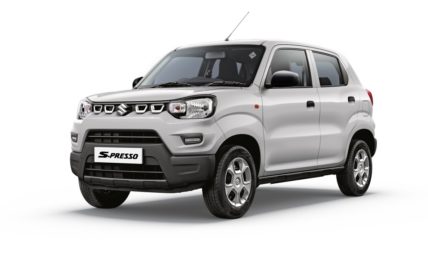The Kwid offers better high-speed stability thanks to the wider tyres
Driving Dynamics – These are lightweight small cars so they do feel a bit jiggly on the highways when driven at high speeds, especially when a heavier vehicle like a truck or a bus passes by. Nonetheless, both the cars are decently stable at speeds up to 80 km/hr. The S-Presso comes across as a bit more fun car to drive while the Kwid has an easy-going nature. None of these cars boast of an engaging steering feel though, but are good commuters since this is what their target audience is looking at. The Kwid now has better stability thanks to its wider tyres while S-Presso has more prominent body roll due to its tall stance. The tyres on the S-Presso feel inadequate if you push the car hard and they lose grip easily.
The S-Presso offers better ride quality and a more feedback-rich steering
The Maruti S-Presso’s suspension is well-tuned for Indian roads and is also the more fun to drive car among the two
Thankfully both these hatchbacks (yes, the S-Presso isn’t an SUV) offer good ride quality. The S-Presso’s ride does deserve a special mention for being very compliant on our poorly laid out roads though. The Kwid’s suspension is nicely tuned but it is noisy. When you drive over bad roads, you do feel a fair amount of vertical movements in these cars, more so in the S-Presso. Braking performance is decent on these vehicles, but brake very hard at high speeds and you might lose your tail.
In terms of safety and after sales service, the S-Presso has an edge
Safety and After Sales Service – Renault offers a single airbag as standard across all variants while a passenger-side airbag is optional on the top variant only. Meanwhile, Maruti offers a single airbag on all variants while the VXi Plus trim comes with dual front airbags as standard. The passenger airbag is optional on the lower variants too so an extra brownie point to Maruti for this. ABS and EBD are standard on both cars and so are reverse parking sensors, seat belt reminders and a high-speed alert. When it comes to service, it is impossible to beat Maruti especially when their network is spread across every corner of the country in comparison to Renault’s limited network.
If space is a priority, the S-Presso is the clear winner
Verdict – It isn’t very hard to pick a winner out of these two. The Renault Kwid scores high when it comes to styling and a feel-good factor but on other vital parameters like space and performance, it is actually the S-Presso which fares better. These vehicles are priced quite similarly and their top variants cost Rs. 5.75-5.85 lakhs (on-road, Mumbai). If you’re looking to buy a car for self-usage and won’t need the rear seats all the time, the Kwid does make for a good buy but if you want a spacious car and don’t mind compromising on the looks, get the S-Presso. Meanwhile, if you can stretch your budget a little, you may be able to get the Tata Tiago or the base variant of the Ford Figo and both of these are way superior than the S-Presso and Kwid. If you don’t mind going the used car route, a plethora of options opens up for you, with a lot of safer, practical and better choices like the Honda Jazz diesel, Honda City, Maruti Ciaz and a lot more.
At this price point, the used car market has a lot of good options too
Further Reading –
Maruti S-Presso vs Renault Kwid – [Video]
Maruti S-Presso Review
Maruti S-Presso Video Review
2018 Renault Kwid Review
2018 Renault Kwid Video Review
Renault Kwid Pros & Cons [Video]
Renault Kwid – Pros & Cons In Hindi [Video]




